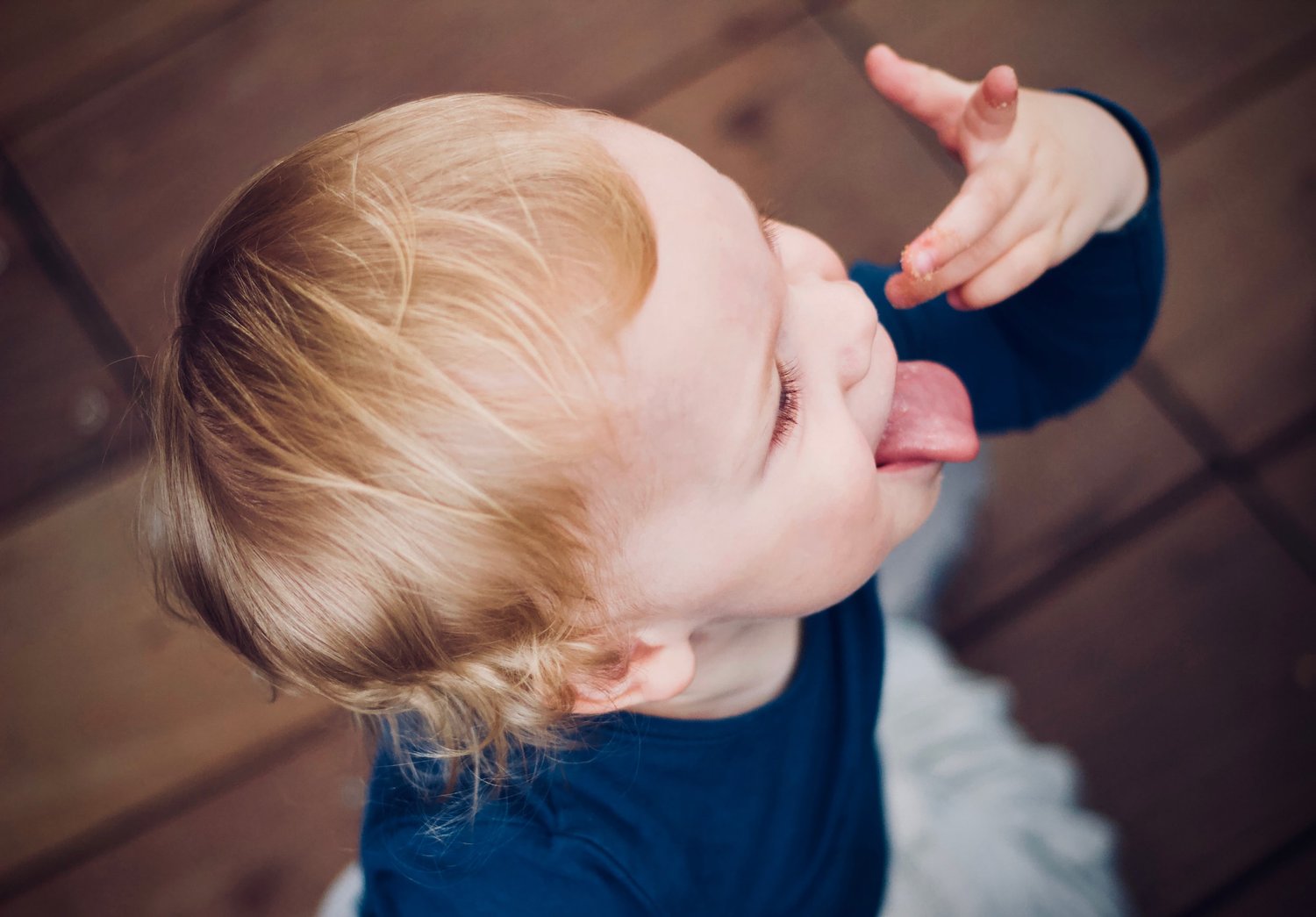Ear infections in children can be the worst! Especially if they become a repeat problem for your child. This condition equates to painful days and sleepless nights for both kids and their parents. Ear infections, also known as acute otitis media, in children are extremely common. The NIH estimates that 5 out of 6 children will have at least one ear infection before their 3rd birthday.
Here are signs that your child may have an ear infection, especially if they’re too young to be able to tell you it’s his/her ear that’s hurting:
Tugging, pulling or constantly touching the ear
Unusual fussiness or crying
Sleep regression or trouble sleeping, waking in the middle of the night crying
Spiking a fever
Visible drainage of fluid from the ear
Unusually clumsy or having trouble with balance
Not being able to listen well, or over reacting/under reacting to noises
Difficulty and/or discomfort with eating/chewing/swallowing/breastfeeding
Viruses are the most common infectious cause of ear infections
Most ear infections are actually viral in nature. This means that antibiotics will not actually cure the infection. This is perhaps the top cause of the over usage of antibiotics in today’s health care setting. In fact, the American Association of Pediatricians has updated its guidelines to pediatricians warning against the over prescribing of antibiotics for ear infections when not warranted, including for the inaccurate treatment of viral ear infections. This does not mean that if your child suffers from extended illness and/or develops a secondary bacterial infection that antibiotics should not be considered—because they should, at that time!
Regardless of viral or bacterial origin, because of the presence of an organism causing infection, mucus is produced by the body’s immune system in efforts to combat the infection. This bodily fluid is able to accumulate in sinuses and behind the ear drum. In children, who tend to have more horizontal eustachian tubes and overall smaller physiology unable to handle excess mucus, it can be difficult for their little bodies to drain the fluid. This stagnant fluid creates the perfect breeding ground for the infection to flourish.
Even with an infection present, it’s important to rule out underlying or root cause factors that make a child more susceptible to ear infections
Dairy tends to be one of the most common causes of repeat ear infections. Both because of its mucus promoting properties and also because children with dairy allergy/sensitivity tend to have more inflammatory up-regulation in the upper respiratory region—this includes the sinuses and ears. A large portion of the population actually has some level of lactose intolerance, meaning the body cannot process this food optimally and the immune system gets angry. Dairy (cheese, yogurt, milk) being mucogenic means that it causes the body to produce copious amounts of mucus. This then leads to an accumulation of excess mucus in little sinuses and little ears (or larger sinuses and larger ears, in adults). A dairy elimination for a full 30 days is a great “re-set” for the immune system. Upon re-entry, if your child becomes symptomatic (upset tummy, constipation, increased mucus, etc), you know you’ve found a root cause. We also use food sensitivity testing in practice often to rule out other foods that may be problematic, including gluten, corn, soy, peanuts and citrus foods.
Over usage of antibiotics is another common root cause. Studies have found that a single round of antibiotics disrupts a healthy microbiome for up to 8 months. 8 months!! If your child has had to have more than one round, it may mean the microbiome has become deficient, imbalanced and less robust to ward off infection. This may also cause a level of gastrointestinal hyperpermeability or leaky gut. A leaky gut translates to an unhappy, dysfunctional immune system.
Sugar is another common culprit! Studies have found that it actually causes white blood cells—which are the foot soldiers of our immune system army—to go into a coma-type state for upwards of 5-6 hours. Children should not have more than 10 grams of sugar daily; this can be a difficult target for most families considering so many foods that toddlers and children love are loaded with sugar.
Anatomy or the structure of a child’s middle ear organs and eustachian tubes, as touched on above, may also be a main culprit. Unlike an adult’s ear canal that drains downward, a child’s ear canal is more horizontal. This prevents the ears from draining well. This is a beautiful indication for chiropractic care that specifically increases spinal alignment and fluid drainage. In fact, there is a specific eustachian tube adjustment wherein the chiropractor accesses the tubes through the oral cavity (opened mouth), towards the upper back side of the throat. We highly encourage chiropractic care if your child suffers from ear infections.
Environmental allergies including mold, grasses, dust, pet dander and smoke can all contribute to ear infections. Once the allergy is introduced, a person’s body becomes inflamed. With inflammation, often comes swelling—when swelling squeezes the ear tube closed, preventing drainage, it creates a major problem in the ears. Not only will this cause a painful pressure build-up, this cascade of effects will increase risk of infection. Make sure you are surveying your home for toxic build up of dust, chemicals and mold. Even small, regular maintenance including changing your HVAC air filters, having your duct work cleaned, vacuuming and using non-toxic cleaning products can greatly improve the function of your child’s respiratory system, which benefits their ear health and overall health.
Natural Remedies for Ear Infection
Mullein garlic oil ear drops by HerbPharm (2 warm drops in ear once in the morning, once in the evening before bed)—if you suspect your child’s ear drum is ruptured, do not put fluid in the ears, follow up for an otoscopic exam with your doctor. Garlic oil is antibacterial and anti-inflammatory.
Create a warm ‘onion ear muff’— cut an onion in half, steam or microwave until the juices are visible on the surface. Cover the onion with a cheese cloth or dish towel to reduce the mess, and place the warm onion on the ear. Keep it there for 10-15 minutes, or as long as possible. (Make sure to test the temperature of the onion before placing it against the ear!) This compress is soothing, pain relieving, and antimicrobial.
Avoid dairy in the diet, during infection and possibly longer, as needed
Zinc Tally by Metagenics (10mg 2x a day for those older than 2 years old)
Zinc boosts immune function and promotes healing.Cold/wet sock therapy, nightly at bedtime or throughout the day while the child is resting; this is an old remedy that helps to increase blood flow, lymph drainage and oxygenation throughout the entire body.
Homeopathic remedies—including chamomilla, pulsatilla, belladonna, hepar sulph + calcarea carbonica are all supportive, and need to be prescribed based on the very specific symptoms of that person.
Vitamin A, single dosage of 50,000-100,000 IU’s. Many studies have shown the powerful anti-infection properties of this vitamin.
Vitamin C (500mg 1-2x daily for 2-6 years old, 500-3000mg 2-3x daily for children 6–12 years old, discuss dosing for children younger than 6 yrs). Vitamin C enhances immune function and lowers inflammation. We like Complete C Powder by Innate Response.
Arabinogalactan powder/Larch by Vital Nutrients. This promotes healthy immune and gut function. ½-1 teaspoon, mix into water AM & PM.
Vitamin D3 (1000 IU – 5,000 IU daily ages 2–12) We prefer vitamin D3/K2 by OrthoMolecular.
Many studies have proven the immune supporting power of vitamin D3.Probiotics, 25-50 billion CFU’s with food 1x/daily; use a multi-strain + refrigerated and dairy free formula such as Therbiotic Complete Powder by Klaire Labs.
Chiropractic adjustments – supportive in allowing for proper drainage + function!
With all of this said, antibiotics are still important and a wonderful addition to our modern-day medicine tool box. It may still be necessary to consider antibiotic therapy depending on the child’s specific clinical picture, symptoms and needs at that time. And as always, as a parent, if your intuition is telling you something is not right with your child, always seek in-person medical care. Wishing you and your family happiness + health!
References
https://www.nidcd.nih.gov/health/ear-infections-children
https://news.wgcu.org/2013-02-25/pediatricians-urged-to-treat-ear-infections-more-cautiously
https://www.ncbi.nlm.nih.gov/pmc/articles/PMC7732679
https://chiro.org/Conditions/Otitis_Media.shtml
Fundamentals of Naturopathic Pediatrics by Dr. Jared Skowron





